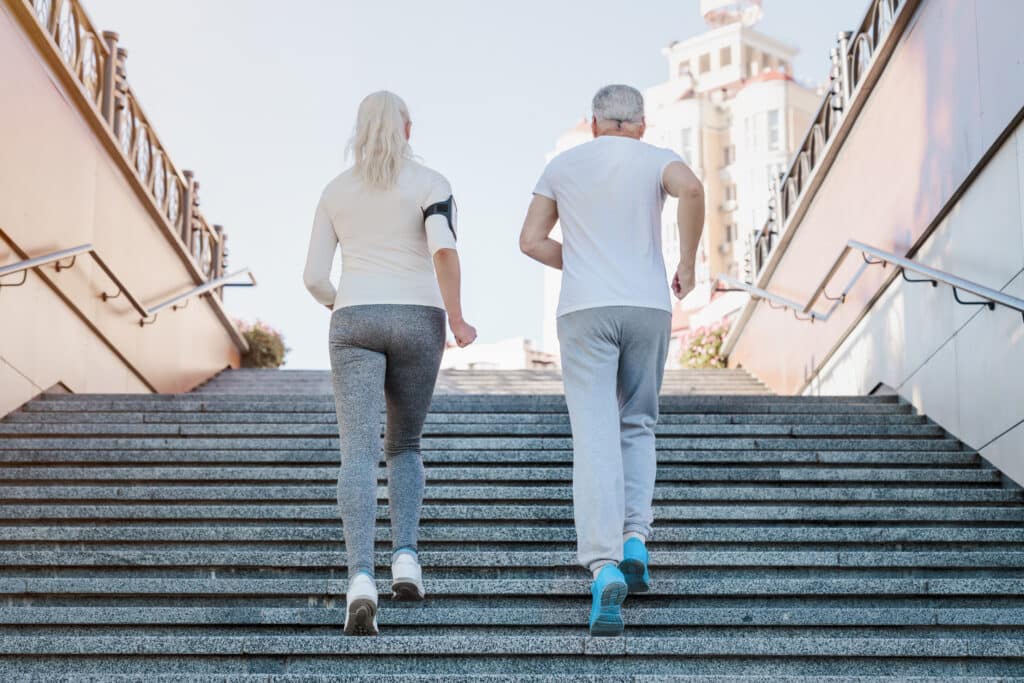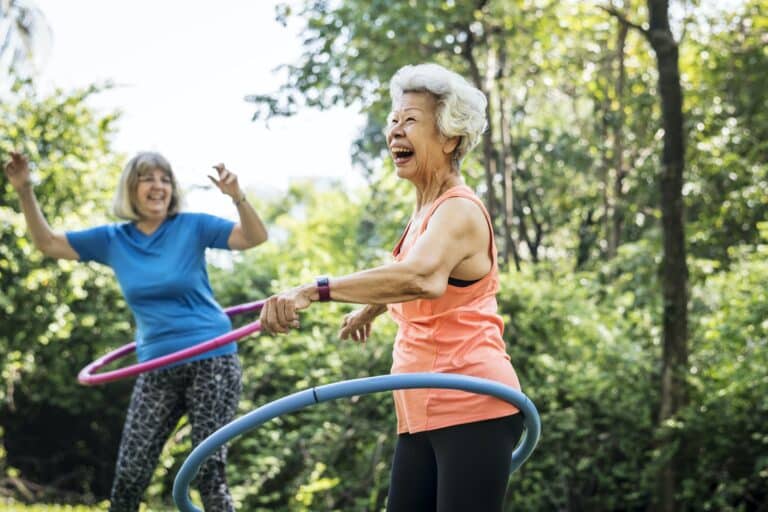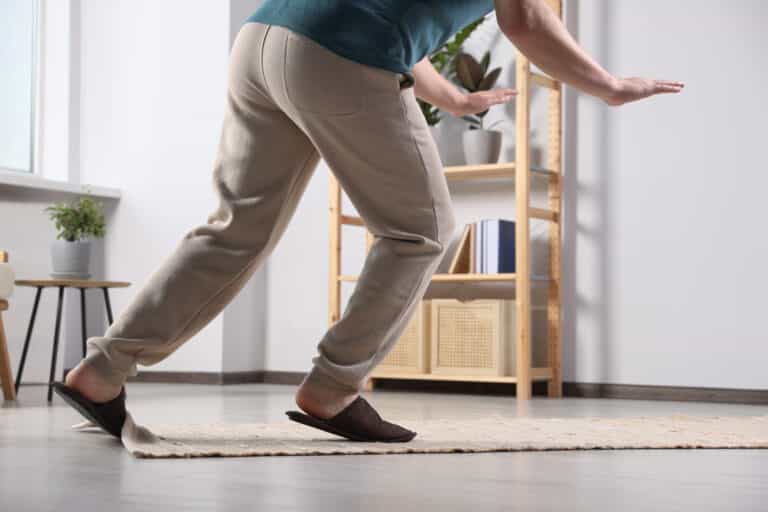As we age, our bodies demand more care and attention, especially when it comes to bone health. Weight-bearing exercises are pivotal for building bone density naturally and improving overall health and wellness.
Whether it’s a simple walk around the neighborhood or engaging in squats and lunges at home, these exercises offer many benefits. They aid in preventing conditions like osteoporosis and contribute significantly to muscle strength, balance, and endurance.
Let’s explore how to incorporate these exercises into your daily routine to embrace a healthier, more active lifestyle and stronger bones at every age.
What is Weight-Bearing Exercise?
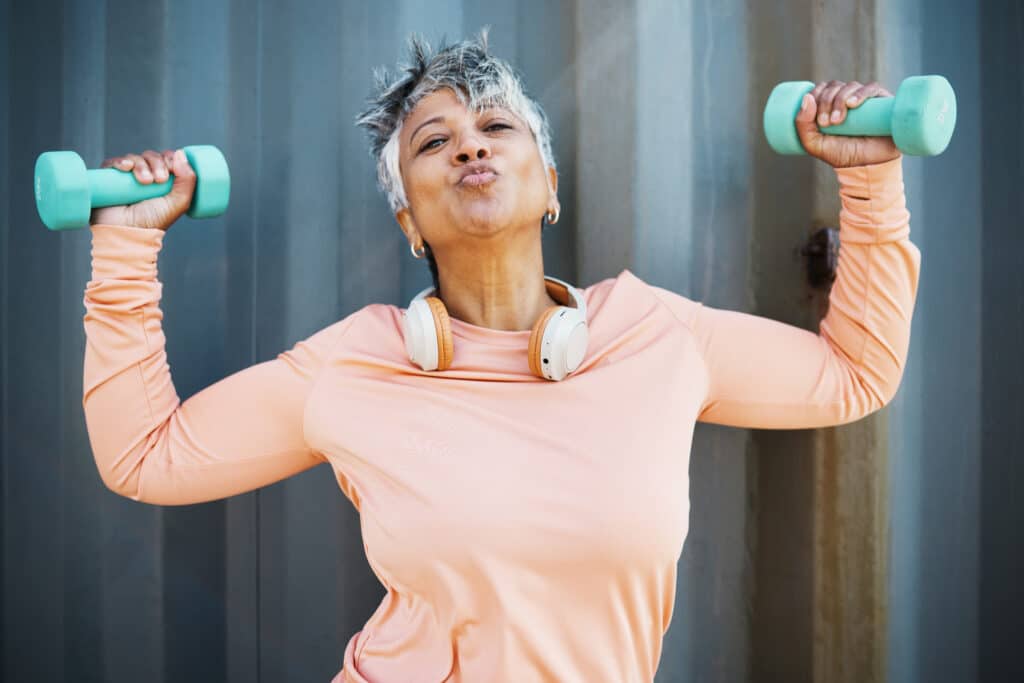
Weight-bearing exercise requires your bones to work against gravity or resistance with your body weight. Some examples of weight-bearing exercise include things like walking and weight lifting.1
Regular weight-bearing exercises stimulate your bones to increase density and strength. Weight-bearing exercises can also help prevent osteoporosis, a common condition in older adults that can increase the risk of bone fractures.2
In addition to improving bone health, weight-bearing exercises promote benefits for your overall health and well-being, such as improving your muscle strength, endurance, and balance. Like other forms of exercise, they can also help you burn calories, maintain a healthy weight, and reduce the risk of chronic health conditions.
Weight-Bearing Exercises You Can Do At Home
There are many weight-bearing exercises that you can do at home without any special equipment. Here are some of the weight-bearing activities that I recommend most often to many of my older adult patients.
Walking
Though it may seem simple, walking is one of the most straightforward and accessible weight-bearing exercises for adults of all ages. You can do it anywhere, anytime, and at your own pace.
Regular walking can help strengthen the bones in your legs, hips, and spine while improving cardiovascular health.3
To get the best results with walking, wear supportive shoes that fit well, have good cushioning, and provide enough traction to walk safely. Choose a terrain that is smooth, flat, and free of obstacles or hazards that might cause tripping or slipping.
Regular walking is my all-time favorite exercise for overall health and wellness. Walking is the most accessible form of exercise that most older adults can do without equipment.
Pointers On Getting the Most Out of Your Walking Routine
Before going out for a walk, you can warm up by doing gentle stretches or active movements with your back, hips, knees, and ankles. Try to maintain good posture when walking by keeping your head up, shoulders back, and core muscles gently engaged.
To make walking more enjoyable or challenging, here are a few techniques to try:
- Listen to music, podcasts, audiobooks, or radio while you walk. This can help you pass the time, relax, and stay motivated. If you decide to wear headphones, be sure you can still hear your surroundings for safety while walking.
- Vary your speed and distance. You can start with a slow and short walk and gradually increase your intensity and duration as you become more confident. You can also alternate between fast and slow intervals to boost your metabolism and burn more calories.
- Add some hills or stairs to your walk. This can increase the difficulty of challenging your muscles and bones more than flat walking. You can also use a fitness tracker to monitor your steps and calories burned.
Squats and Lunges
Squats and lunges are two powerful weight-bearing exercises for seniors that target the muscles and bones in your lower body. On top of increasing the bone density and strength in your thighs, hips, knees, and ankles, they can also improve your balance and joint health.
How to Squat Safely
To perform squats and lunges safely, here are some essential instructions:
- Keep your feet shoulder-width apart and your toes pointing forward.
- Bend your hips and knees simultaneously until your thighs parallel the floor, or you cannot comfortably squat deeper.
- Keep your back straight and your chest upright. Do not lean forward or sideways.
- Push through your whole foot and return to the starting position.
I often recommend squatting until your legs become tired, then taking a break. If you can perform more than 20 squats efficiently, you can add weight —or more repetitions— for more difficulty.
How to Perform a Lunge
Here’s how to perform lunges:
- Take a big step forward with one leg and slowly bend both knees. Continue until your back knee almost touches the floor or until you can’t comfortably go deeper.
- Keep your back straight, your chest upright, and your core muscles engaged. Keep your front heel on the ground at all times.
- Push through your front foot and return to the starting position.
Note: a chair or other stable surface provides helpful balance assistance for either of these exercises.
Like squats, lunges can be done with walking poles or a counter for support. Start with smaller motions and gradually work toward bigger ones as you feel more confident.
Having tried hundreds of different exercises with adults of all ages, squatting and lunging are two of my favorite and most effective exercises for older adults for lower body strength, balance, and joint health.
Impact-Loading Exercises for Bone Density
Like other tissues in your body, your bones are constantly breaking down and rebuilding. However, if your bones don’t receive the stimulation to signal that they need to get stronger, the breakdown can exceed rebuilding, resulting in conditions like osteopenia and osteoporosis.
Your bones rebuild in response to impact from activities like walking, but slightly more intense impact can improve bone health. Here are some of our favorite light-impact exercises that I recommend to improve bone density.
Heel Drops
This exercise is designed to create a safe, measured impact force through the bones of your lower body. As a result, with proper rest and nutrition, your bones will grow more robust to withstand the force of this movement and others like hopping or stepping down from a high surface.
To perform heel drops, stand with your feet hip-width, your legs and spine straight and stacked, and your hands on a chair or some other stable surface for balance. Lift your heels high, then let them drop back down.
As noted in the video, start with a lighter drop, then gradually increase in intensity as you become accustomed to the movement. Start with around five repetitions, and progressively add on as long as you can do so without pain.
High Knee “Hard” Marching
Similarly to the heel drops exercise, this can be done standing with balance support as needed.
While you may have done high knee marches as a balance exercise, this focuses more on the impact of the heel when it makes contact with the ground. Although we suggest doing this exercise barefoot, imagine you are trying to knock mud off the heel of a boot as you drive your heel into the ground.
Start with about five repetitions on each foot daily. If you don’t experience pain, you can gradually build to about twenty repetitions over several weeks, adding one or two with each passing day.
Alternating Box Hops
If you felt comfortable with the previous exercises and are looking for a bone density exercise that also builds dexterity, try alternating box hops.
To do this exercise, use a secure exercise step or some other stable stepping surface and a wall or something else to help you maintain balance. Start with one foot on the box and alternate, switching feet.
It may be beneficial to start this exercise as a simple step up, then step down motion, alternating the foot that lands on the ground. Over time, you can gradually increase the speed until it’s more of a hop than a step. Start with three sets of ten on each foot, then gradually increase to twenty over time.
Two-Foot Jumps
Two-foot jumps are like a slightly more intense version of the heel drops exercise above. Unlike heel drops, though, with this exercise, your entire foot will briefly leave the ground, and you will land with both knees bent.
We encourage you to continue using your balance aid as you get accustomed to jumping. Start easier with about 3-5 repetitions daily, and gradually build your number of jumps daily until you can do 15 or more with no pain and good form.
Skipping
That’s right: skipping isn’t just for kids!
If you feel comfortable with the previous exercises, this exercise challenges balance, coordination, and bone strength.
To skip, first check your floor for obstacles or items you might trip over, like cords, puddles, or dog toys. Alternatively, this can be done at a counter or with a hiking pole for added stability.
Like running, propel your body forward using a light motion of your arms and upper body, lifting one knee to your chest and alternating with each repetition. Skipping can start with small motions in the upper and lower body, and you can progress to higher jumps and larger arm movements as you become comfortable.
Start with two sets of five skips with each leg. As you become accustomed, increase the number of skips and add repetitions as needed, resting between sets.
Climbing Stairs
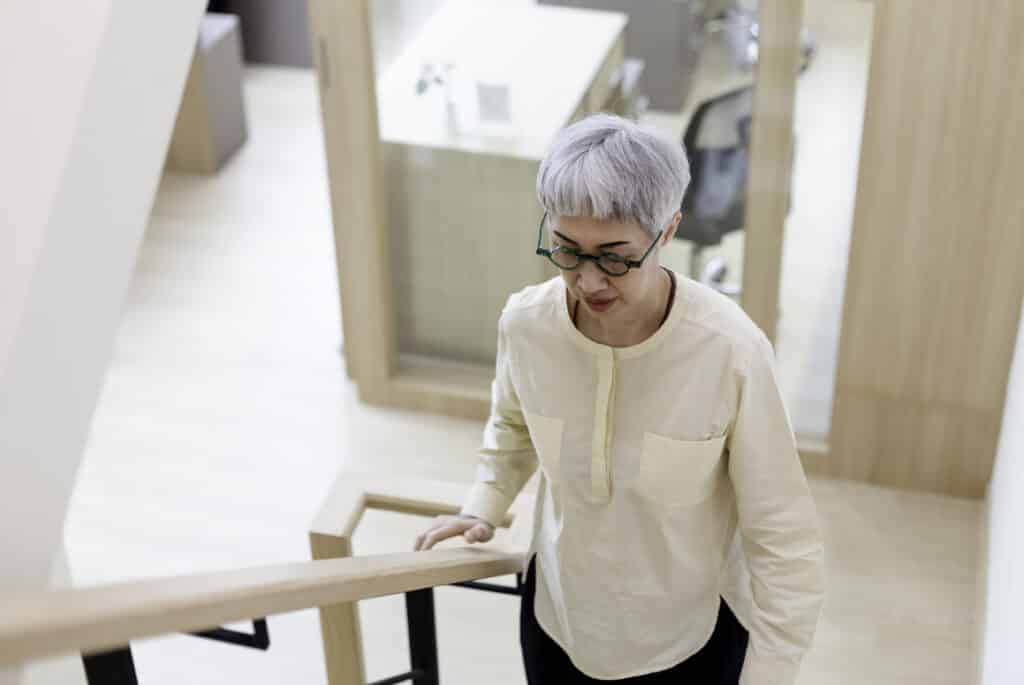
Stairs are another simple and convenient weight-bearing tool with stairs you can use at home or anywhere else. Climbing stairs can help improve the strength and endurance of the muscles in your legs and improve bone health. Of course, it can also enhance your cardiovascular fitness and burn far more calories than walking.
To climb stairs effectively, here are a few basic guidelines to follow:
- Always use handrails for balance if they are needed. Make sure not to pull or lean on the rail too much.
- Step with your whole foot on each stair, not just your toes or heels. This can help distribute the weight evenly and improve your endurance while exercising.
- Keep your knees aligned with your toes; do not let them buckle inward or outward. This can help prevent knee stress and improve comfort.
In addition to climbing stairs, going down stairs can be a great way to train your lower body muscles while improving bone health. You can quickly get a full workout by consecutively walking up and down stairs. I’ve even spent full exercise sessions walking older adults through a stair-climbing routine because it’s just that important.
To make climbing stairs more dynamic as an exercise, you can try some of these ideas:
- Alternate between fast and slow pace. You can climb one or two flights of stairs quickly and then slow down for the next one or two. This can help you improve your endurance.
- Skip a step. You can skip an extra as you climb to increase the range of motion and difficulty of the exercise. This can help you work your muscles and bones harder. Only do this if you’re feeling very confident in your abilities.
- Carry some weights. You can hold some dumbbells or kettlebells or wear a weighted vest. This can increase the resistance and challenge your body more.
Balance Training
Balance training is weight-bearing exercise that can improve your stability, coordination, and posture. More importantly, balance training can help prevent falls by enhancing your ability to react to changes in your body position and environment.
Since falls are a leading cause of injury and death among older adults, improving and maintaining your balance can help you stay safe and independent in the long term.
Here are a few balance exercises that you can try at home.
Single Leg Balance
Start by bending one knee so that you are standing on one leg. Remain on one foot until your leg becomes tired or you can no longer balance, then put your opposite leg back on the ground. You can make this more challenging by slowly turning your body side-to-side. Conversely, you can make it easier by holding onto a countertop or another stable surface.
Heel-Toe Walking
Start by placing the heel of one foot in front of the toes of the other foot, as if you are walking on a tightrope. Try to walk in a straight line for 10 to 20 steps, then turn around and return to the start. You can make this more challenging by turning your head side-to-side or scaling back by only placing your foot halfway in front of the other while walking.
Unstable Surface Training
Start by placing a pillow or a cushion on the floor and standing on it with both feet. Try to hold your balance until your legs become tired or until you begin to lose your balance. You can make this more challenging by standing on one leg or more accessible by choosing a more stable surface.
Balance training can also be done with activities like yoga or Tai Chi. If exercise classes are your favorite way to maintain your health, they can be a great option to work on balance. You also benefit from practicing in a safe setting with others, which offers the added benefit of making new social connections. Many of my patients prefer classes for these reasons.
To train balance safely, you should follow these tips:
- Start with more straightforward exercises and gradually increase the difficulty level as you get better at balancing.
- Practice in a spacious, well-lit area free of clutter or obstacles.
- Always have a backup plan when performing balance exercises. Even if you don’t need a counter or wall for support, you should stand near one if you need to stop a fall unexpectedly.
- Have someone nearby for assistance if needed, especially if you have a history of falls or injuries.
Lifting Weights
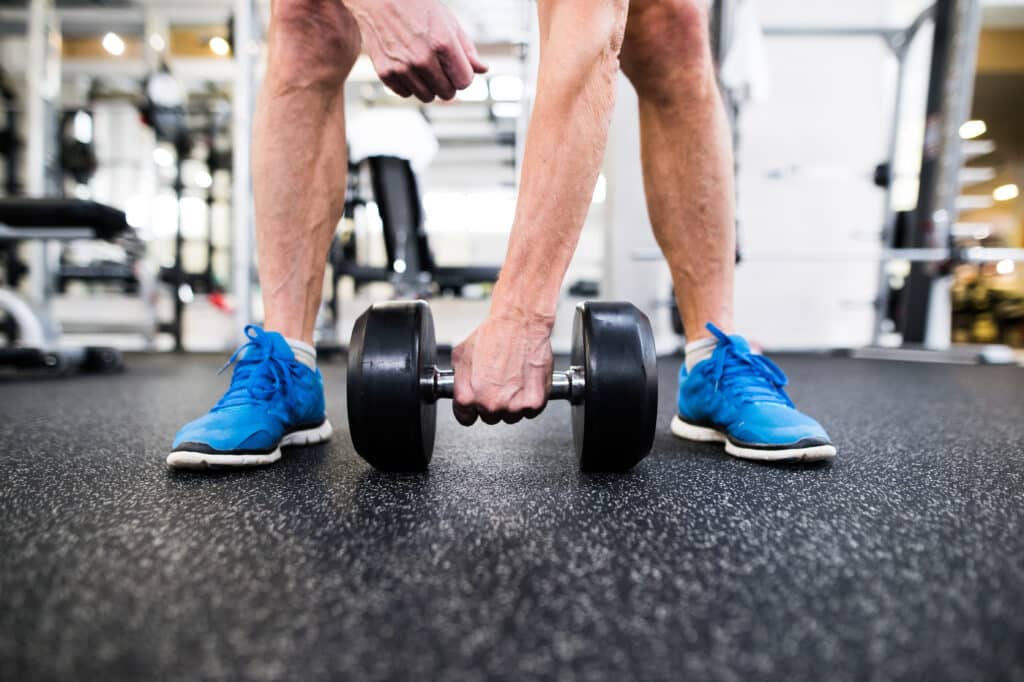
Lifting weights is one of the most effective weight-bearing techniques for building bone mass and preventing bone loss. It can help stimulate bone growth while increasing your muscle strength, power, and endurance, which can help you perform daily activities more efficiently and safely.4
As a physical therapist specializing in fitness and conditioning, I cannot recommend a more effective method to improve bone strength than lifting weights. This doesn’t mean other techniques like walking and balance aren’t helpful. Instead, adding weight lifting to your exercise routine can enhance your benefits.
To lift weights correctly and safely, you should follow these recommendations:
- Select an appropriate weight level that challenges you but does not cause pain. You should be able to lift the weight for 8 to 12 repetitions with good form. If the weight is too light or too heavy, adjust it accordingly.
- Perform a balanced routine that targets all major muscle groups. You should include exercises for your upper body and lower body when possible. You can use various equipment, such as dumbbells, barbells, kettlebells, resistance bands, or your body weight.
- Avoid jerking, bouncing, or swinging weight, as this can increase the risk of injury.
- Rest between sets. It’s best to allow your muscles and bones to recover for at least one minute between each set of exercises. This can help you get the most out of every weight-training workout.
Not everyone has access to weightlifting equipment, especially those who spend most of their time at home. To lift weights without access to standard equipment, you can try some of these options:
- Use household items as weights. You can use water bottles, books, bags, or anything else that has some weight and is easy to hold. You can also fill containers with water, sand, or rocks to adjust the weight level.
- Use your own body weight as resistance. You can do push-ups, planks, squats, lunges, or bridges. You can also modify these exercises by changing the position of your hands or feet, elevating your legs or arms, or adding pauses.
Which Weight-Bearing Exercises Should Be Avoided With Osteoporosis?
Osteoporosis is a condition that describes loss of bone density, increasing the risk of fractures. Regular weight-bearing exercise is an effective way to improve bone density and reduce the risk of bone fracture. However, there are a few things you can do to limit risks when exercising:
- Avoid exercises that involve jumping or jerking or have a high risk of causing a fall.
- Gradually increase your exercise weight and intensity over weeks or months.
- Work with your doctor to have routine bone density scans (DEXA) and consider getting physical therapy for osteoporosis management.
Key Takeaways
- Weight-bearing exercises, like walking and weight lifting, are essential for increasing bone density and strength.
- These exercises can prevent osteoporosis and reduce the risk of bone fractures, especially in older adults.
- Beyond bone health, they improve muscle strength, endurance, and balance, and are beneficial for overall health and well-being.
- Home-friendly exercises such as walking, squats, lunges, and stair climbing are highly effective for seniors.
- Balance training and lifting weights are crucial components of a comprehensive exercise regimen for aging adults.
- It’s important to avoid high-risk exercises if you have conditions like osteoporosis and to adapt workouts to individual capabilities.
FAQs
What are weight-bearing exercises, and why are they important for seniors?
Weight-bearing exercises load your bones, typically by working against gravity. These include exercises using your body weight, like squats and lunges, and aerobic activities, like walking, running, and dancing. They are crucial for seniors because they help maintain and improve bone strength, muscle strength, posture, balance, and coordination, which are particularly important to combat osteoporosis and reduce fall risk.
How do weight-bearing exercises benefit bone health, especially for those with osteoporosis?
The impact of weight-bearing exercises stimulates bones to become stronger, which is vital for older adults at risk of osteoporosis or low bone density. Regular engagement in these exercises can help maintain bone density, slow down bone breakdown, and even prevent or delay the onset of osteopenia and osteoporosis
What types of weight-bearing exercises are most effective for seniors?
Practical weight-bearing exercises for seniors include walking, tai chi, yoga, golf, dancing, and hiking. These activities not only strengthen bones but also improve balance and coordination. It’s essential to incorporate various exercises to challenge the body in different ways and prevent overuse injuries.
How should seniors with osteoporosis approach weight-bearing exercises?
Seniors with osteoporosis or osteopenia should consult their doctor or physical therapist before starting any exercise routine. The general guideline is to build up activity slowly and steadily, avoiding high-impact activities or those with a high risk of falling initially. Gradually working up to more challenging activities is key to strengthening bones safely.
Can non-weight-bearing activities be part of a senior’s exercise routine for bone health?
Yes, non-weight-bearing activities like swimming, which offer cardiovascular and mood-boosting benefits, can be part of a senior’s exercise routine. However, it’s essential also to include weight-bearing exercises on alternate days, aiming for two to three times a week, to ensure comprehensive bone health benefits.
References
- Anderson TB, Duong H. Weight Bearing. [Updated 2023 May 1]. In: StatPearls [Internet]. Treasure Island (FL): StatPearls Publishing; 2023 Jan-. Available from: https://www.ncbi.nlm.nih.gov/books/NBK551573/
- Benedetti MG, Furlini G, Zati A, Letizia Mauro G. The Effectiveness of Physical Exercise on Bone Density in Osteoporotic Patients. Biomed Res Int. 2018;2018:4840531. Published 2018 Dec 23. doi:10.1155/2018/4840531
- Cheng J, Meng S, Lee J, Kwak HB, Liu Y. Effects of walking and sun exposure on bone density and balance in elderly with osteopenia [published correction appears in J Bone Miner Metab. 2023 Jul;41(4):579]. J Bone Miner Metab. 2022;40(3):528-534. doi:10.1007/s00774-022-01317-7
- O’BryanO’Bryan SJ, Giuliano C, Woessner MN, et al. Progressive Resistance Training for Concomitant Increases in Muscle Strength and Bone Mineral Density in Older Adults: A Systematic Review and Meta-Analysis. Sports Med. 2022;52(8):1939-1960. doi:10.1007/s40279-022-01675-2

